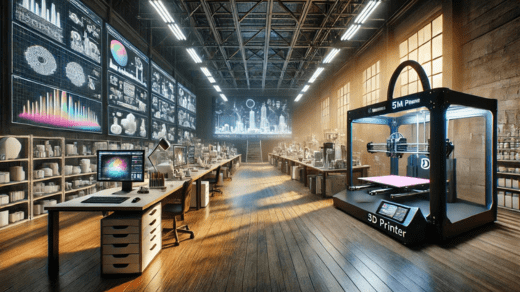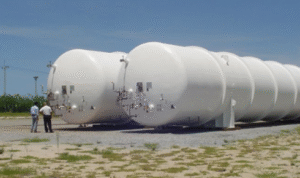In the world of printing, technological advancements have brought remarkable changes, expanding from traditional 2D printing to the innovative realm of 3D printing. Whether for personal use, creative projects, or professional applications, both 2D and 3D printers have become essential tools. In this article, we’ll delve into the features of various types of printers and provide a detailed qidi max3 review, highlighting why this model stands out in the 3D printing market.
Understanding 2D Printers
2D printers have been a staple in homes and offices for decades. They come in several types, each serving unique needs:
Inkjet Printers: Inkjet printers use liquid ink to create high-quality prints, making them ideal for photos, graphics, and documents. They are versatile and can handle various paper types and sizes. Inkjet printers are known for their ability to produce vibrant colors and detailed images, which is why they are favored for photo printing and creative projects.
Laser Printers: Utilizing toner and laser technology, laser printers are renowned for their speed and efficiency. They are particularly suitable for high-volume printing, delivering sharp text and clear graphics. Laser printers are a popular choice in office settings where quick and reliable printing is essential.
All-in-One Printers: Combining printing, scanning, copying, and sometimes faxing, all-in-one printers offer versatility and convenience. They are especially useful in environments where space is limited but multiple functions are needed. These multifunction devices streamline tasks and are a great solution for home offices and small businesses.
Introduction to 3D Printing
3D printing, or additive manufacturing, represents a significant evolution from 2D technology. Unlike traditional printers that produce flat images, 3D printers create three-dimensional objects from digital designs. This technology has a wide range of applications, from rapid prototyping to custom manufacturing. Here are the main types of 3D printing technologies:
Fused Deposition Modeling (FDM): FDM is one of the most common 3D printing methods. It involves melting plastic filaments and depositing them layer by layer to build objects. FDM printers are popular for their affordability and ease of use. They are suitable for creating prototypes, functional parts, and creative models. The technology is widely adopted by both hobbyists and professionals.
Stereolithography (SLA): SLA technology uses a laser to cure liquid resin into solid layers. This method produces high-precision parts with smooth surfaces. SLA printers are ideal for applications requiring fine detail, such as intricate prototypes, dental models, and jewelry. SLA is known for its exceptional accuracy and surface finish.
Selective Laser Sintering (SLS): SLS printers use a laser to fuse powdered materials into solid objects. This technology is valuable for creating durable and functional parts, making it suitable for industrial applications and advanced prototyping. SLS printers are appreciated for their ability to produce complex geometries and functional prototypes.
Spotlight on the QIDI MAX3 Review
Among the myriad of 3D printers available, the QIDI MAX3 stands out as a noteworthy option. Here’s a detailed QIDI MAX3 review that explores its key features and why it’s a preferred choice for many 3D printing enthusiasts and professionals:
1. Impressive Print Quality: The QIDI MAX3 delivers high-quality prints with remarkable detail. It utilizes advanced motion systems and extrusion technology to ensure precise and accurate results. Whether you’re working on detailed prototypes or complex models, the QIDI MAX3 ensures a high level of print fidelity and consistency.
2. Generous Build Volume: One of the standout features of the QIDI MAX3 is its expansive build volume. With a large print area, users can create larger objects or multiple smaller items simultaneously. This feature is particularly useful for producing sizable prototypes, custom parts, or intricate designs that require ample space.
3. Dual Extrusion Capabilities: The QIDI MAX3 supports dual extrusion, allowing users to print with two different materials or colors at the same time. This feature is advantageous for creating complex parts with mixed materials, such as combining flexible and rigid filaments or using different colors for multi-colored models. Dual extrusion enhances the versatility of the QIDI MAX3 and expands its creative potential.
4. User-Friendly Interface: Equipped with an intuitive touchscreen interface, the QIDI MAX3 simplifies operation and navigation. Users can easily access settings, start prints, and monitor progress with just a few taps. This user-friendly interface makes the printer accessible to both beginners and experienced users, enhancing the overall printing experience.
5. Robust Performance: Built for durability and reliability, the QIDI MAX3 offers stable performance and reduced maintenance needs. Its robust construction ensures consistent operation, making it suitable for both continuous use in professional settings and occasional use by hobbyists.
6. Versatile Material Compatibility: The QIDI MAX3 is compatible with a wide range of filament materials, including PLA, ABS, PETG, and more. This versatility allows users to experiment with different materials to achieve specific properties such as strength, flexibility, or durability. The printer’s ability to handle various filaments expands its applications and creative possibilities.
7. Efficient Printing Speed: Designed for efficiency, the QIDI MAX3 delivers fast printing speeds without sacrificing quality. Its optimized motion system contributes to quicker production times, which is beneficial for users who need to complete projects swiftly or handle high-volume printing tasks.
8. Advanced Features and Technology: The QIDI MAX3 integrates advanced features such as automatic bed leveling and power recovery functions. Automatic bed leveling ensures a consistent and accurate first layer, while the power recovery function allows the printer to resume printing after a power outage, minimizing potential interruptions and material waste.
Conclusion
As the world of printing continues to advance, both 2D and 3D printers play crucial roles in various applications. While 2D printers remain essential for traditional printing tasks, 3D printers like the QIDI MAX3 represent a leap forward in creating detailed and functional objects. Understanding the features and benefits of different printers can help you make informed decisions and choose the best model for your needs.
Explore the possibilities offered by modern printing technology and see how the QIDI MAX3 stands out as a top choice for 3D printing enthusiasts and professionals. With its advanced features, impressive performance, and versatility, the QIDI MAX3 is a valuable addition to any 3D printing setup.






